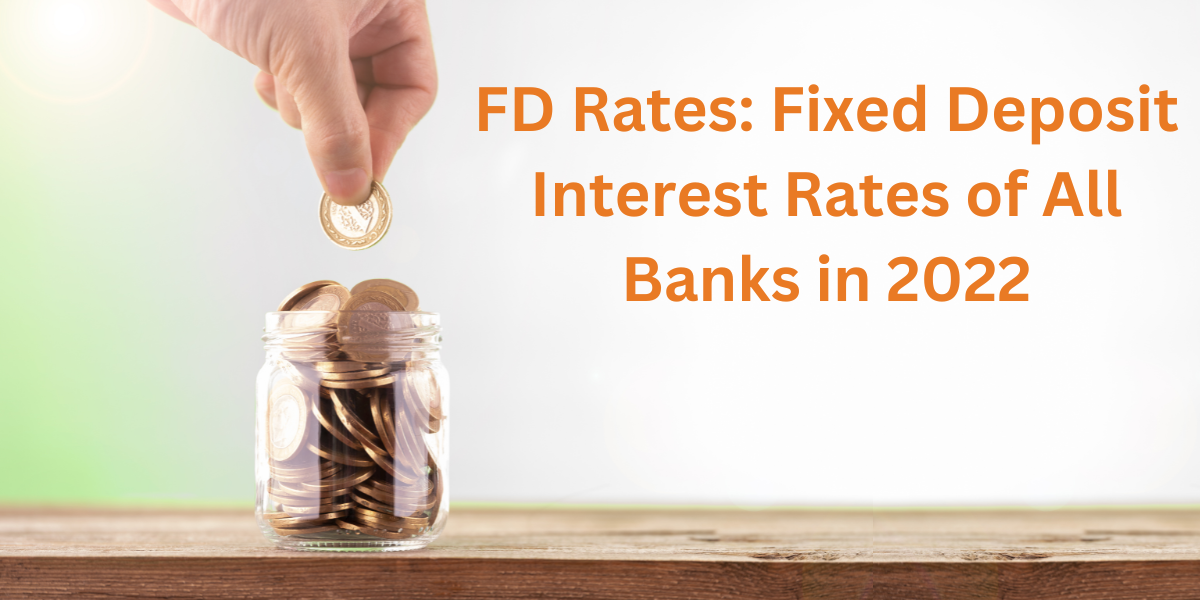The interest rate on your fixed deposit (FD) account is important, but it is just one of many factors to consider when choosing a bank. The table below shows the FD interest rates of all banks in India for the year 2022. The interest rate alone doesn’t tell you the whole story. Some banks may offer a higher interest rate but have less favorable terms and conditions. Others may have a lower interest rate but offer more attractive features. When comparing FD rates, be sure to consider the following: Minimum deposit amount: Some banks require a minimum deposit amount to open an FD account, while others have no minimum.
Some banks require a minimum deposit amount to open an FD account, while others have no minimum. Maximum deposit amount: Most banks have a maximum deposit limit for FD accounts. This is usually between Rs 1 lakh and Rs 10 lakh. Most banks have a maximum deposit limit for FD accounts. This is usually between Rs 1 lakh and Rs 10 lakh. Interest payment frequency: Interest can be paid monthly, quarterly, half-yearly, or at maturity. Choose the frequency that best suits your needs. Interest can be paid monthly, quarterly, half-yearly, or at maturity. Choose the frequency that best suits your needs. Taxation: Interest earned on FDs is taxable. Be sure to factor this in when comparing FD rates. Interest earned on FDs is taxable. Be sure to factor thisCheck PlagiarismCopySave
A fixed deposit is an instrument that offers a better FD interest rate than a regular savings account once you lock in a fixed amount for a specific period. It is a smart investment option for investors who want to receive higher returns post-maturity in a risk-averse way as compared to mutual funds, equities, and other market-linked instruments.
You can earn substantial returns by investing a large amount for a longer tenor at a competitive interest rate. To earn better returns from a fixed deposit, you can utilize some of the below-mentioned ideas:
High returns from corporate FDs
Recently, the interest rates reduce ball the major banks owing to the slowing down of the economy and turbulent economic conditions. The bank FD rates range from 2.5 to 5.5% whereas the postal FD rates are slightly better than bank FDs.
However, the absence of flexible tenor and liquidity options of post office FD schemes might take away from you the opportunity of investing in a high-paying FD whenever the interest rates increase again. Therefore, this is the best time to explore FD avenues other than bank deposits and post office FD schemes.
Ladder deposits
The returns provided by long-term FD plans are higher but your short-term financial needs might suffer by investing in them. To even out the odds, you can invest in both long-term deposit plans by dividing your corpus in FD plans of varying tenors.
This also helps to balance the difference in interest rates and enables you to consolidate your returns at a higher FD rate whenever you get a chance. The multi-deposit facility can be used to invest in multiple FDs simultaneously. You can choose a different tenor and deposit amount for each FD and you can also invest in both FD types at your convenience.
A flexible tenor range of 12 to 60 months helps you to achieve your short-term and long-term investment goals with ease.
Choose wisely among the FD types
There are two FD types viz. cumulative and non-cumulative FDs and you need to choose one among them as per your financial requirements.
Financiers usually offer the same interest rate for non-cumulative FDs and cumulative FDs. However, the method of interest calculation varies as the interest gets added next calculation cycle in the case of cumulative FDs which ultimately results in higher returns.
The interest gets paid at regular intervals if you deposit in non-cumulative FDs. A higher interest payout frequency results in lesser compounding of returns and therefore, cumulative FDs offer slightly better returns than non-cumulative FDs.
However, non-cumulative FDs are preferred for those who need additional funds or a stable income source to meet their regular expenses. The cumulative FD of the option of monthly, yearly, six-monthly, and quarterly interest payouts enables you to fund your periodic expenses.
Also, you can deposit your money in a cumulative FD to multiply your returns quickly. The FD rate calculator available on its portal shows the returns of both cumulative and non-cumulative.
FDs at once and this helps you to make a better decision based on your financial requirements.
Also, major credit rating organizations like CRISIL and ICRA have given it high ratings for securing the deposits of customers. Therefore, it is a safe investment option as well. Moreover, senior citizens will get a 0.25% extra FD rate, and non-seniors will get a 0.10% additional rate for using an online FD form.
More Banks and NBFC FD Calculators
AXIS BANK Calculator
BAJAJ FD Calculator
BANK OF BARODA FD Calculator
ICICI FD Calculator
HDFC FD Calculator
CANARA BANK FD Calculator
KOTAK BANK FD Calculator
PNB BANK FD Calculator
POST OFFICE FD Calculator
SBI FD Calculator
UNION BANK FD Calculator
